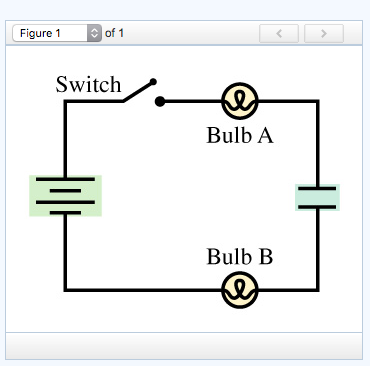The figure shows a circuit consisting of a battery, a switch, two identical lightbulbs, and a capacitor that is initially uncharged.
a. Immediately after the switch is closed, are either or both bulbs glowing? Explain.
b. If both bulbs are glowing, which is brighter? Or are they equally bright? Explain.
c. For any bulb (A or B or both) that lights up immediately after the switch is closed, does its brightness increase with time, decrease with time, or remain unchanged? Explain.
I really don't understand the concept of how a capacitor affects the flow of current in a circuit, and am having an incredibly hard time figuring out this question. At least an idea of where to start would be great.
I had thought that for part A both light bulbs would begin glowing since the capacitor isn't charged, but i have no idea how to tell which one is brighter. I also think that for part C, the brightness of the bulbs would decrease over time after the capacitor is charged because once it's charged the voltage of the capacitor equals the voltage of the battery, hence there is no voltage potential and no current. Am I on the right track at all for this???



